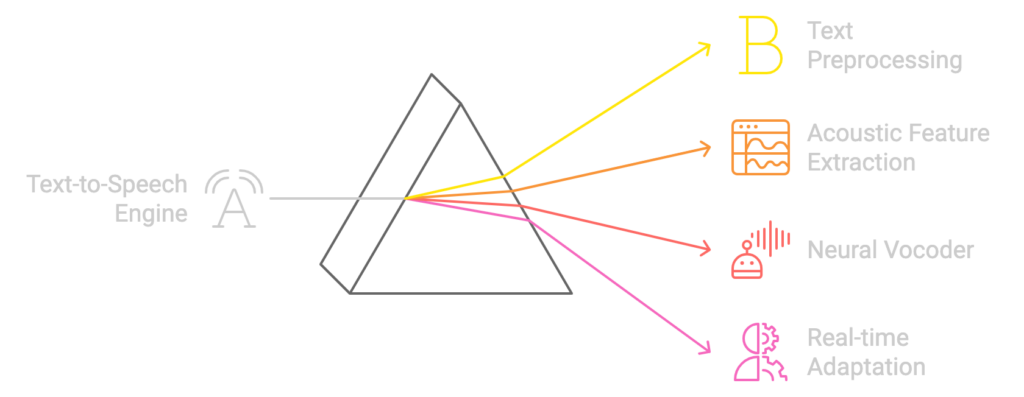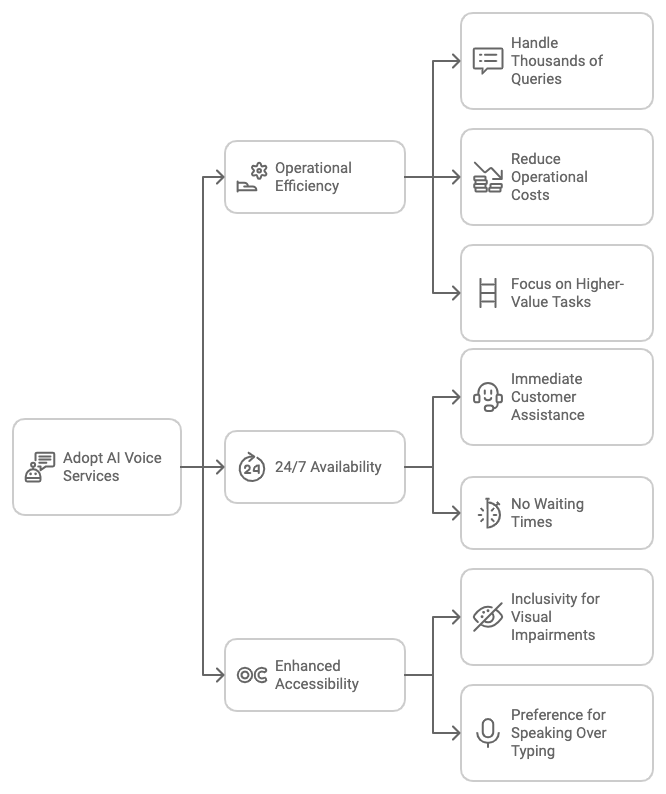As we stand at the crossroads of technological advancement, one significant shift is becoming crystal clear: AI-powered customer service is no longer a distant dream—it’s our present and future. At Nort Labs, we’ve been pioneers in this space with Lucy, our AI-driven customer service model that has transformed how businesses interact with customers. Initially developed as a chat-based solution, Lucy has now evolved. She has a voice.
This evolution isn’t just about upgrading a chatbot to a voice assistant. It’s about fundamentally changing how businesses and consumers interact in a digital world. The rise of text-to-speech (TTS) technology, which powers Lucy’s vocal capabilities, represents an important step in this transformation. However, as with any innovation, there’s an adoption curve to consider—one that requires users to adjust how they communicate with AI.

The Power of TTS in Customer Service
At its core, text-to-speech (TTS) technology is designed to convert written text into natural-sounding speech. What once seemed robotic and mechanical is now fluid, with AI like Lucy delivering seamless, human-like responses in real-time conversations. The advancement in speech synthesis has been remarkable, with AI capable of picking up nuances such as tone, intonation, and even pausing for effect—ensuring conversations feel more natural.
From a technical standpoint, Lucy’s TTS model is built using deep learning algorithms that continuously learn from interactions. This means the more Lucy interacts with users, the more refined and personalized her voice becomes. This is where neural TTS plays a pivotal role, as it allows for dynamic control over voice pitch, rhythm, and speed—delivering speech that mirrors human emotion and intent.
At the heart of Lucy’s voice system is a sequence-to-sequence model that maps out phonetic and acoustic features, converting raw text input into speech that sounds nearly indistinguishable from human voices. This process relies on a vocoder, a neural network architecture designed to reconstruct high-fidelity waveforms from mel-spectrograms (visual representations of sound frequencies). Lucy’s system uses WaveNet, a state-of-the-art vocoder that not only synthesizes high-quality speech but also introduces slight variations in tone and inflection, mimicking the natural cadence of human conversation.
Technical Framework of Lucy’s TTS
Lucy’s text-to-speech engine is built upon a multi-layered architecture:
Text Preprocessing: Input text undergoes preprocessing, including tokenization (breaking down sentences into smaller units like words or phonemes) and lexical analysis (understanding the structure and meaning of the text).
Text Normalization: Lucy’s system utilizes grapheme-to-phoneme (G2P) conversion to translate written words into their phonetic equivalents. This is crucial, especially in cases where words have multiple pronunciations based on context.
Acoustic Feature Extraction: Here, a neural network generates an intermediate representation of the input text, mapping it to its corresponding mel-spectrogram—a frequency-based visualization of sound.
Neural Vocoder: Once the spectrogram is generated, the vocoder (e.g., WaveNet or Tacotron 2) converts this spectrogram into high-fidelity audio. The vocoder fine-tunes prosodic elements (stress, rhythm, and intonation) to ensure the speech sounds fluid and human-like.
Real-time Adaptation: Using online reinforcement learning, Lucy’s voice model adapts to user feedback and interaction patterns. This learning is implemented using policy gradient methods where positive interaction outcomes reinforce desirable behavior, such as maintaining conversational flow.

The Future is Voice-First
The future of customer service is one where AI drives the majority of interactions, from troubleshooting product issues to answering frequently asked questions. Those businesses that embrace this technology now are setting themselves up for success in a world where consumers expect instant, efficient, and intelligent responses.
At Nort Labs, we’re leading this charge, and Lucy is just the beginning. As more consumers grow accustomed to speaking with AI, those companies that lag behind will find themselves missing out—not just on the technology itself, but on the customer satisfaction and loyalty that AI-driven service fosters.
The shift is happening, and it’s happening quickly. AI isn’t just an upgrade—it’s the next frontier in customer service. For companies, it’s not a question of if they should adopt AI; it’s when. And the sooner, the better.
So, are you ready to embrace the future? Because Lucy’s ready to meet your customers where they are—online, on the phone, and at the forefront of a new era in customer service.
FAQ
- What is text-to-speech (TTS) technology, and how does it improve customer service?
TTS technology converts written text into natural-sounding speech, allowing AI like Lucy to provide real-time, human-like responses. It enhances accessibility, speeds up interactions, and creates a more engaging experience for customers. How does Lucy’s AI voice model handle natural conversations?
Lucy’s voice system uses advanced neural TTS models and deep learning algorithms to replicate natural human speech patterns, such as tone, intonation, and rhythm. This makes conversations with Lucy feel fluid and less robotic.Can AI like Lucy handle complex customer queries just like a human agent?
Yes! Lucy is built to understand complex customer needs through natural language processing (NLP), enabling her to manage detailed queries, resolve issues, and provide personalized assistance efficiently.What are the main benefits of adopting AI voice technology for customer service?
AI voice technology increases efficiency by handling multiple customer interactions simultaneously, reduces operational costs, offers 24/7 availability, and improves customer satisfaction through faster, more accurate responses.Will customers need to adjust how they communicate with AI voice services?
While there may be a slight learning curve, AI voice services like Lucy are designed to handle natural speech patterns. Over time, users adapt, finding the experience more efficient and streamlined than traditional human-based interactions.





